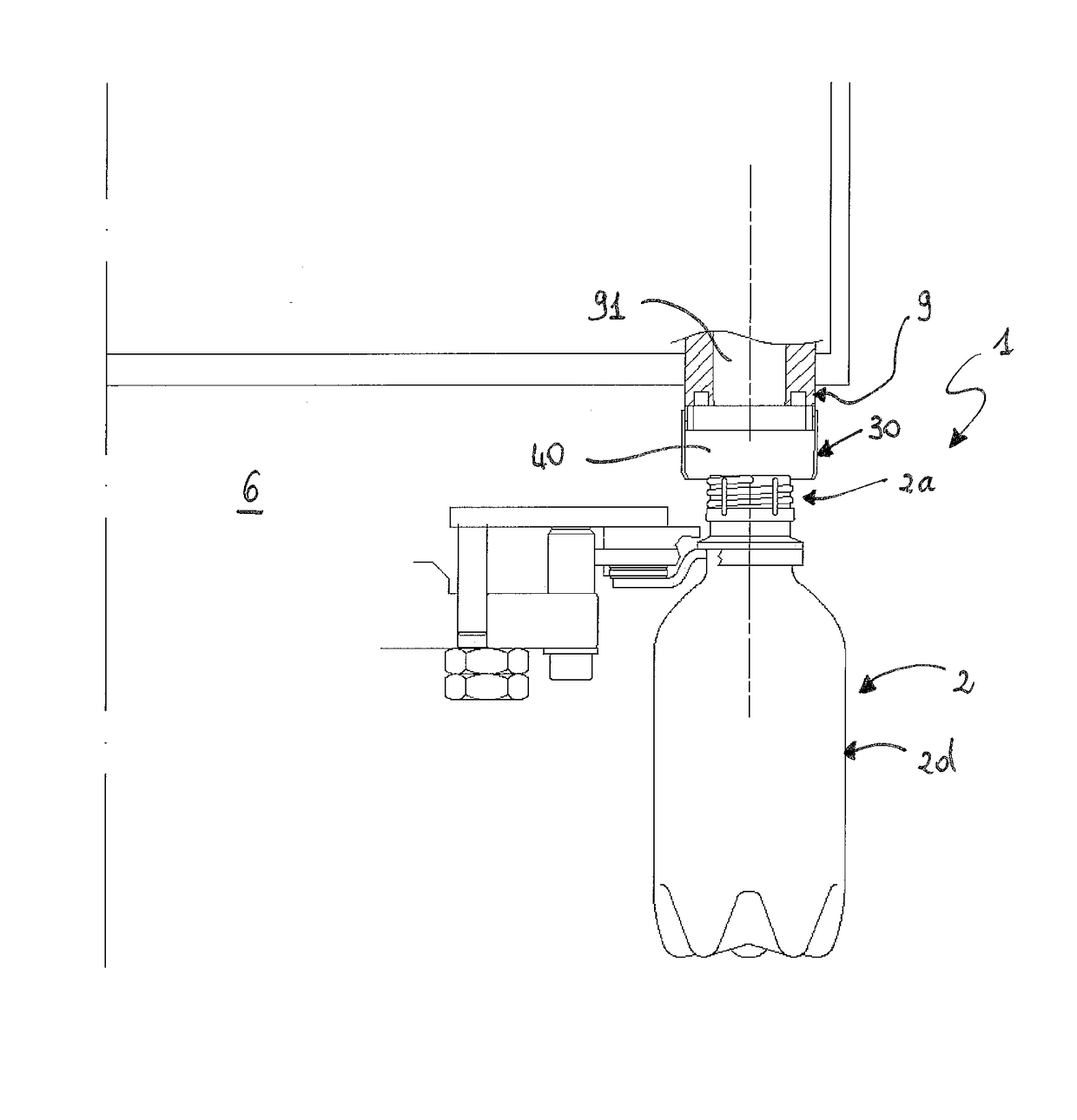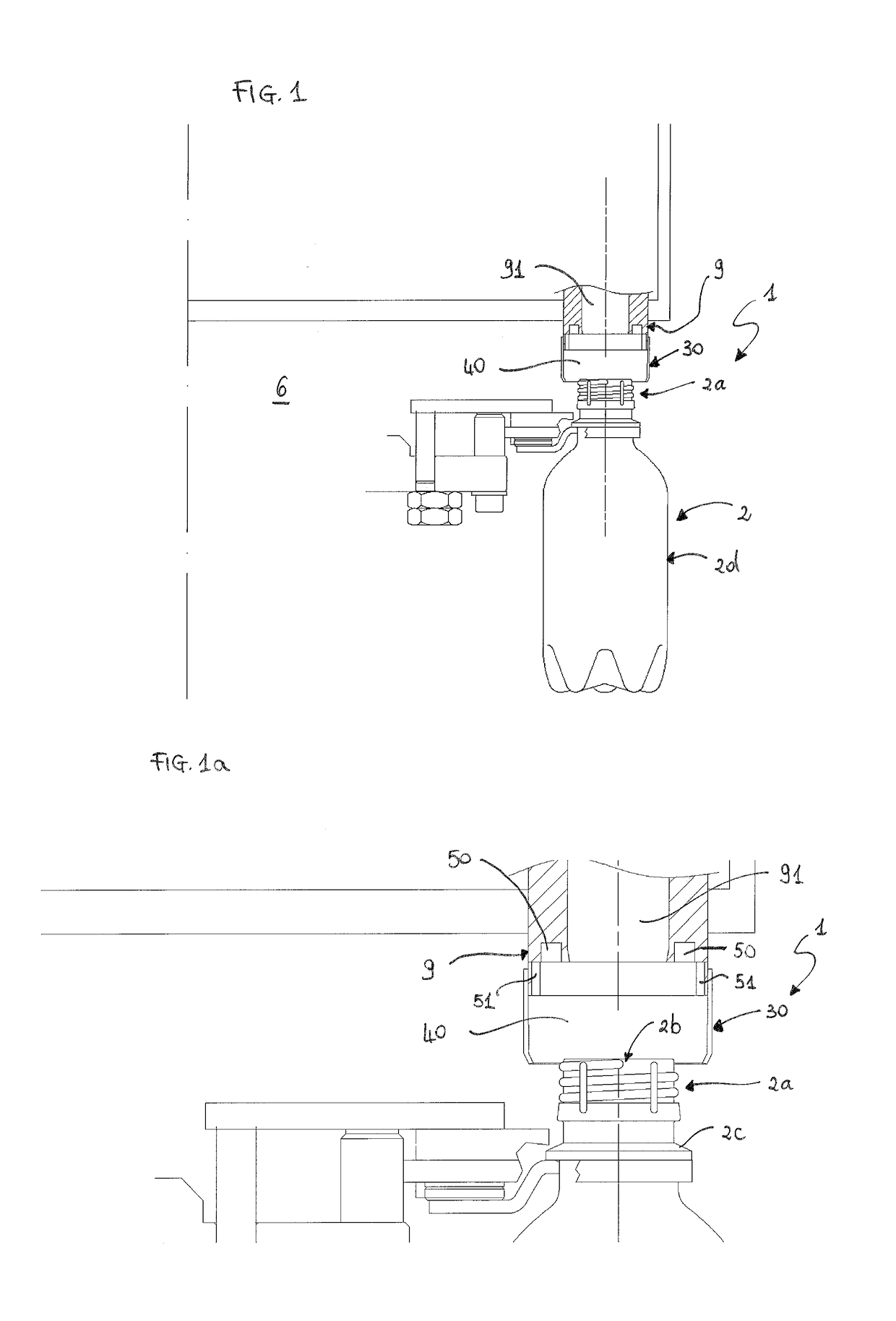Apparatus and method for filling containers
a container and apparatus technology, applied in the field of apparatus and a container filling method, can solve the problems of difficulty in performing format change, maintenance or machine part adjustment operations, considerable wastage of operating fluid, etc., and achieve the effect of reducing the time needed for performing sterilisation operations, restoring sterility along the line, and being faster and more practical
- Summary
- Abstract
- Description
- Claims
- Application Information
AI Technical Summary
Benefits of technology
Problems solved by technology
Method used
Image
Examples
Embodiment Construction
[0081]With reference to the figures, 10 indicates an apparatus for filling containers 2 with a filling product, for example with a drink.
[0082]The filling apparatus 10 comprises a rotating carousel 10a with a plurality of filling stations 1 in each of which a filling valve 9 is arranged below which the corresponding container 2 can be positioned with its mouth 2b facing towards the filling valve 9.
[0083]Originally, the filling apparatus 10 comprises means for separating 30 a treatment volume 40 of the individual neck 2a of each container 2 from an external environment 6 containing the body 2d of the container 2. In particular, the treatment volume 40 is comprised between the corresponding filling valve 9 and at least a part of the neck 2a of the container 2. The treatment volume 40 therefore also protects the internal surface of the container 2 which comes into contact with the filling product. The filling apparatus 10 further comprises dispensing means for dispensing a fluid into t...
PUM
| Property | Measurement | Unit |
|---|---|---|
| volume | aaaaa | aaaaa |
| volumes | aaaaa | aaaaa |
| dead angle | aaaaa | aaaaa |
Abstract
Description
Claims
Application Information
 Login to View More
Login to View More - R&D Engineer
- R&D Manager
- IP Professional
- Industry Leading Data Capabilities
- Powerful AI technology
- Patent DNA Extraction
Browse by: Latest US Patents, China's latest patents, Technical Efficacy Thesaurus, Application Domain, Technology Topic, Popular Technical Reports.
© 2024 PatSnap. All rights reserved.Legal|Privacy policy|Modern Slavery Act Transparency Statement|Sitemap|About US| Contact US: help@patsnap.com










